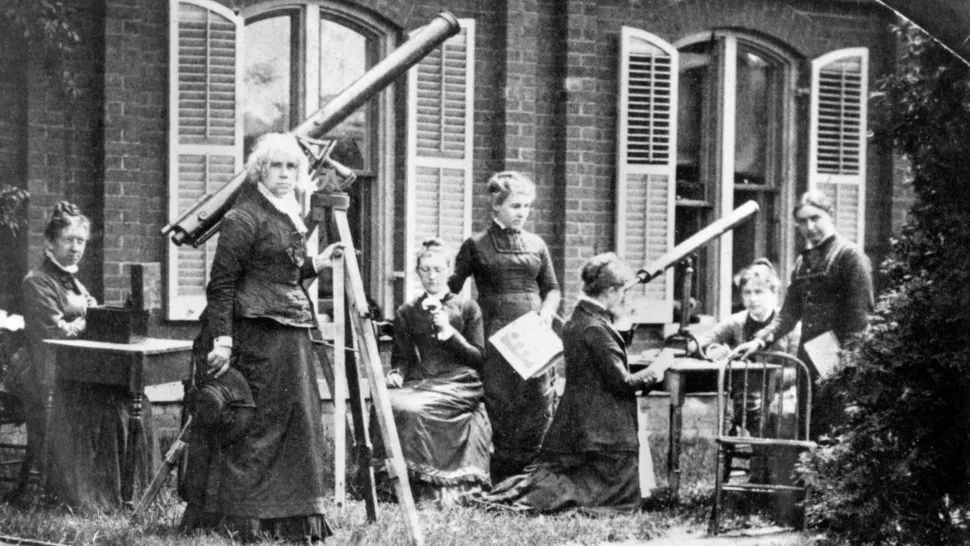AAS Committee on the Status of Women
Issue of March 10, 2023
eds: Jeremy Bailin, Nicolle Zellner, Sethanne Howard, and Hannah Jang-Condell
[We hope you all are taking care of yourselves and each other. --eds.]
This week's issues:
 |
| Google Doodle honors International Women's Day |
1. International Women's Day
2. Updated Information: NASA Planetary Science Summer School
3. Three Space Station Women Engineers
4. Maria Mitchell: America’s first female astronomer
5. Female astronauts keep making strides off Earth
6. Shooting the sky: Meet the women astrophotographers capturing the beauty of the Milky Way in Qatar
7. Job Opportunities
8. How to Submit to the AASWomen Newsletter
9. How to Subscribe or Unsubscribe to the AASWomen Newsletter
10. Access to Past Issues of the AASWomen Newsletter
An online version of this newsletter will be available at http://womeninastronomy.blogspot.com/ at 3:00 PM ET every Friday.
-------------------------------------------------------------------------------
1. International Women's Day
From: Sethanne Howard via womeninastronomy.blogspot.com
March 8, 2023 is International Women’s Day (IWD), with a theme to “Embrace Equity”. As IWD staff write, “Equity isn't just a nice-to-have, it's a must-have. A focus on gender equity needs to be part of every society's DNA. And it's critical to understand the difference between equity and equality.”
Equality means each individual or group of people is given the same resources or opportunities. Equity recognizes that each person has different circumstances, and allocates the exact resources and opportunities needed to reach an equal outcome. Equity means creating an inclusive world.
Read more at
https://womeninastronomy.blogspot.com/2023/03/international-womens-day.html
-------------------------------------------------------------------------------
2. Updated Information: NASA Planetary Science Summer School
From: Joyce Armijo [joyce.e.armijo_at_jpl.nasa.gov]
Now through March 27, 2023, NASA is encouraging applications for its 35th Annual Planetary Science Summer School. Offered by the Jet Propulsion Laboratory in Pasadena, California, PSSS is a 3-month long early career development experience to help prepare the next generation of planetary science and engineering mission leaders. Participants learn the process of developing a science hypothesis-driven robotic space mission in a concurrent engineering environment while getting an in-depth, first-hand look at mission design, life cycle, costs, schedule and the trade-offs inherent in each.
A recording of the PSSS Informational Application Q&A webinar held on February 14 is available at
https://www.jpl.nasa.gov/edu/intern/apply/nasa-science-mission-design-schools/
To apply and learn more about the NASA Science Mission Design Schools:
http://go.nasa.gov/missiondesignschools
-------------------------------------------------------------------------------
3. Three Space Station Women Engineers
From Sethanne Howard [sethanneh_at_msn.com]
by Heather Deiss, NASA
Women of the International Space Station Program’s workforce are trailblazers and contribute to the success of the orbiting laboratory in remarkable ways. From program management to research or mission integration, the numerous space station teams are rich with women engineers who work hard on the ground to ensure the seamless operation of the orbiting laboratory 250 miles above.
Read more at
https://www.nasa.gov/feature/inspiring-the-next-generation-meet-three-space-station-women-engineers
-------------------------------------------------------------------------------
4. Maria Mitchell: America’s first female astronomer
From: Jeremy Bailin [jbailin_at_ua.edu]
“First, no woman should say, 'I am but a woman!' But a woman! What more can you ask to be?” - Maria Mitchell
Read more at
https://www.noaa.gov/heritage/stories/maria-mitchell-americas-first-female-astronomer
-------------------------------------------------------------------------------
5. Female astronauts keep making strides off Earth
From: Jeremy Bailin [jbailin_at_ua.edu]
By Elizabeth Howell
More than 60 years after human spaceflight began in 1961, genders other than male make up only about 10% of astronauts and space tourists. But diversity is starting to accelerate, with recent notable spaceflights of women including an octogenarian, a cancer survivor with a prothesis and a Black female pilot. NASA also pledges that a woman will be on its Artemis 3 mission, which aims to land on the moon as soon as 2025.
Read more at
https://www.space.com/international-womens-day-space-diversity-2023
-------------------------------------------------------------------------------
6. Shooting the sky: Meet the women astrophotographers capturing the beauty of the Milky Way in Qatar
From: Jeremy Bailin [jbailin_at_ua.edu]
By Chaitra Arjunpuri
It’s new moon day and that season again. She double-checks her camera, carefully attaching the wide-angle lens. She keeps extra memory cards, batteries, a headlamp, a remote, and an intervalometer in the separate padded sections in the backpack, before slipping the tripod in the dedicated attachment. She’s all geared up to travel from Doha to a location with the least light pollution. She and her three friends have waited for this day and are excited to be under the stars, staying the whole night out in the desert, capturing the stars.
Read more at
https://www.euronews.com/culture/2023/03/08/shooting-the-sky-meet-the-women-astrophotographers-capturing-the-beauty-of-the-milky-way-i
-------------------------------------------------------------------------------
7. Job Opportunities
For those interested in increasing excellence and diversity in their organizations, a list of resources and advice is here:
https://aas.org/comms/cswa/resources/Diversity#howtoincrease
- Tenure-Track Position in Planetary Science and Instrumentation, University of Hawaii
https://www.schooljobs.com/careers/hawaiiedu (search on 0086576)
- Tenure-Track Position in Materials Science and Mineral Physics, University of Hawaii
https://www.schooljobs.com/careers/hawaiiedu (search on 0086226)
- Postdoc in Exoplanets at Louisiana State University
https://jobregister.aas.org/ad/984986d7
- Lecturer, Astronomy Department, University of Maryland
https://ejobs.umd.edu/postings/105248
-------------------------------------------------------------------------------
8. How to Submit to the AASWOMEN newsletter
To submit an item to the AASWOMEN newsletter, including replies to topics, send email to aaswomen_at_lists.aas.org .
All material will be posted unless you tell us otherwise, including your email address.
When submitting a job posting for inclusion in the newsletter, please include a one-line description and a link to the full job posting.
Please remember to replace "_at_" in the e-mail address above.
--------------------------------------------------------------------------------
9. How to Subscribe or Unsubscribe to the AASWOMEN newsletter
Join AAS Women List through the online portal:
To Subscribe, go to https://aas.simplelists.com, and in the "Subscribe" area, add in your name, email address, select "The AASWomen Weekly Newsletter", and click subscribe. You will be sent an email with a link to click to confirm subscription.
To unsubscribe from AAS Women by email:
Go to https://aas.simplelists.com, in the "My account and unsubscriptions", type your email address. You will receive an email with a link to access your account, from there you can click the unsubscribe link for this mailing list.
--------------------------------------------------------------------------------
10. Access to Past Issues
https://aas.org/comms/cswa/AASWOMEN
Each annual summary includes an index of topics covered.










